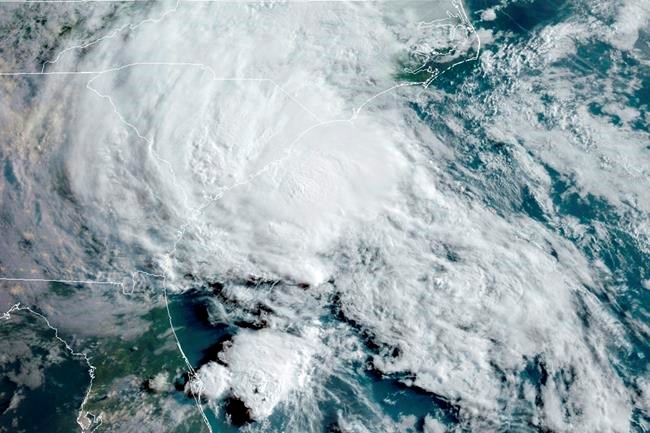
Tropical Storm Bertha forms, hits South Carolina coast
MIAMI — Tropical Storm Bertha made landfall on South Carolina's coast Wednesday morning shortly after it formed, becoming the second named storm before the official start of this year's Atlantic hurricane season.
by Canadian PressMIAMI — Tropical Storm Bertha made landfall on South Carolina's coast Wednesday morning shortly after it formed, becoming the second named storm before the official start of this year's Atlantic hurricane season.
A tropical storm warning was issued for South Carolina's coast and the storm was expected to bring heavy rainfall, the U.S. National Hurricane Center said.
Bertha's maximum sustained winds were near 50 mph (80 kph) as it came ashore but it was expected to weaken to a tropical depression after moving inland. The storm was centred about 40 miles (65 kilometres) northeast of Charleston, South Carolina, and was moving north near 15 mph (24 kph).
The storm caused minor flooding in Charleston with a few streets closed. But the city, which floods dozens of times a year, saw worse problems from an unnamed storm that dumped heavy rain last week.
Along America Street in Charleston, residents awoke Wednesday to an intersection that had become a water-filled canal. Cars parked on the curb had water up to their doors, The Post and Courier reported.
Garbage cans had spilled over, and dirty diapers, magazines and food scraps clogged drains in the area, the newspaper reported.
Bertha was expected to move rapidly inland, spreading up to 4 inches (10 centimetres) of rain through eastern South Carolina into North Carolina and Virginia. Flash flood watches were issued as the region has already seen plenty of rain in May.
Earlier this month, Tropical Storm Arthur brought rain to North Carolina before moving out to sea. It was the sixth straight year that a named storm has developed before June 1, the official start of the Atlantic hurricane season.
The last time there were two named storms before June was in 2016, according to Phil Klotzbach, a research scientist with Colorado State University’s atmospheric science department. It also happened in 1887, 1908, 1951 and 2012, he said.
“Most of these early season named storms form, at least in part, from non-tropical or subtropical processes and don’t necessarily imply anything about the remainder of the season," Klotzbach said in an email to The Associated Press.
The Associated Press